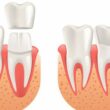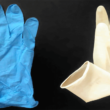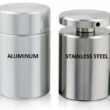Difference Between Corrosion And Tarnish
Corrosion
Corrosion is the natural deterioration or destruction of a material as a result of its interaction with its environment. The term is applied mostly to metals and particularly to their reaction with oxygen, or rusting; all materials, however, are subject to surface deterioration. Generally the processes are chemical or electrochemical, although physical and mechanical factors contribute to the corrosion. The cost of replacing corroded equipment and protecting existing structures exceeds $10 billion each year in the United States.
Corrosion of metals is generally confined to the surface. In some cases, such as that of aluminum, a layer of oxide is formed that serves as a barrier to prevent further contact with oxygen, thus suppressing corrosion. The very thin oxide layer on iron protects the iron in dry air. In the presence of moisture, however, hydrates of iron oxide form, the iron becomes porous to oxygen, and corrosion proceeds.
Although some trace impurities in metal can accelerate corrosion, others inhibit it. Aluminum is added to brass to make it more corrosion-resistant. The most common means of thwarting corrosion is to apply a resistant surface coating or lining. Paint, plastic, rubber, and ceramics are commonly used, and metals are often plated with a more resistant metal such as nickel or chromium.
Tarnish
Tarnish, the film coating caused by the reaction of a metal and nonmetal. Tarnish is considered “dry corrosion.” In this process there is a direct combination of the metal, which acts as the anode, with a nonmetallic element, such as oxygen or sulfur, serving as the cathode. Oxide films may be invisible or dulling, while sulfide films may have many colors. The film may protect the metal against more corrosion.
The metals and their alloys that are subject to tarnish are aluminum, copper, gold (below 14 carat), magnesium, iron, nickel, chromium, zinc, cadmium, and silver.
The tarnish film that forms on silver is composed of silver sulfide. The sulfur may come from the burning of industrial fuels or from common foods such as onions and eggs.
The simplest method of preventing tarnish on silver is to keep it from coming into contact with air. Any covering that will maintain a stagnant air or an airless atmosphere will do. Once tarnish does form, it can be removed by abrasive polishing, electrolytic reduction, or chemical reagents. Abrasive polishing is risky because it can, for example, eventually remove the entire silver surface from a plated article.



